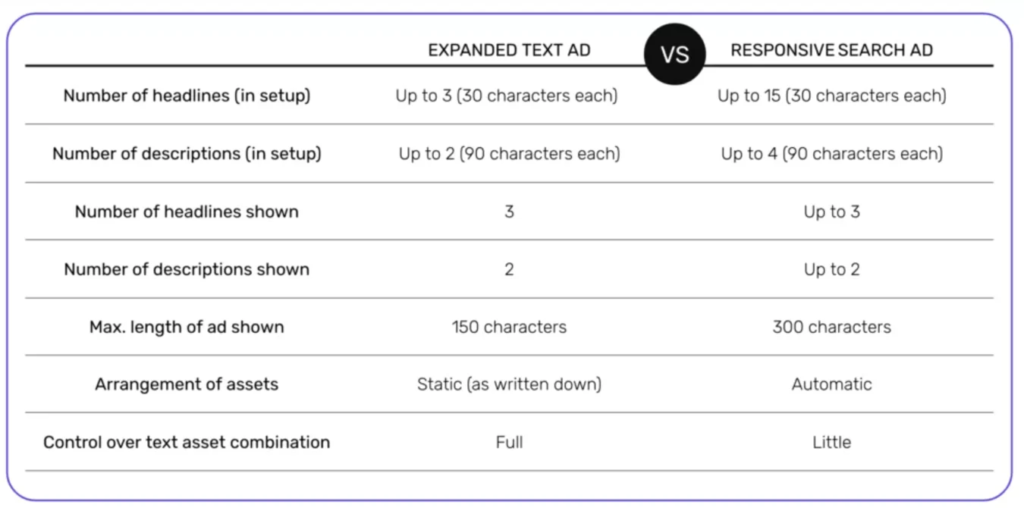Google Ads, the advertising platform that drives a significant portion of online traffic, has announced a major shift in its ad format. It’s phasing out Expanded Text Ads (ETAs), the current mainstay, in favor of Responsive Search Ads (RSAs). This change affects all advertisers that use Google Ads to promote their products and services. But what exactly are ETAs and RSAs, and how will this switch impact advertisers?
Understanding ETAs and RSAs
Expanded Text Ads (ETAs) have been the go-to ad format for Google Ads for years. The layout consists of three headlines (each with a character limit) and two description lines, allowing advertisers to craft concise messages that directly target user searches.
Responsive Search Ads (RSAs) take a more flexible approach. With RSAs, advertisers provide multiple headlines and descriptions, and Google’s algorithm tests different combinations to determine which ones perform best for each user search. This allows a wider range of messaging and potentially improves ad performance.

What the Switch Means for Advertisers
The move from ETAs to RSAs signifies a major change in how advertisers approach search advertising. Here’s a breakdown of what this means:
- Increased automation: RSAs rely heavily on Google’s automation to determine the most effective ad combinations. This can be a time-saver for advertisers, freeing them to focus on other aspects of their campaigns. However, they also relinquish some control over how ads are displayed. Advertisers can pin their preferred headlines and descriptions to mitigate this, ensuring the inclusion of those elements in the final ad.
- Potential for improved performance: Google claims that RSAs can lead to better click-through rates and conversions when compared to ETAs. This is because the algorithm can tailor the ad to each search, potentially showing the most relevant message to the user (think location-specific offers or including dynamic keyword insertion).
- More work up front: Creating effective RSAs requires providing a variety of headlines and descriptions, focusing on strong calls to action and unique selling propositions. This can be more time-consuming than crafting a single ETA, but the potential payoff in performance can be worthwhile.
- Learning curve: As with any new system, there’s a learning curve for advertisers using RSAs. It’s vital for advertisers to understand how to create effective ad copy, utilizing features such as ad strength indicators, as well as monitoring the performance of different combinations. Tools, such as Google’s Responsive Display Ads, can also help generate initial variations within RSAs.
- A/B testing: The ability to test different headlines and descriptions within a single ad group is a powerful feature of RSAs. Advertisers can experiment with various messaging approaches and see which combinations resonate best with their target audience. This data-driven approach can lead to continuous improvement in ad performance.
Advertiser Takeaways
While switching to RSAs may seem daunting initially, it presents an opportunity for advertisers to improve their campaign performance. Here are some key takeaways:
- Embrace the change: ETAs are being phased out, so you have to accept the change. Therefore, familiarizing yourself with RSAs is essential.
- Start experimenting: Create RSAs and monitor their performance alongside your existing ETAs. Don’t be afraid to experiment with different ad copy variations.
- Focus on quality: Provide high-quality, relevant headlines and descriptions with strong CTAs. This will give Google’s algorithm the best material to work with.
- Track and analyze: Closely monitor the performance of your RSAs using metrics such as click-through rate, conversion rate and ad strength. Make adjustments as needed based on the data you see.





